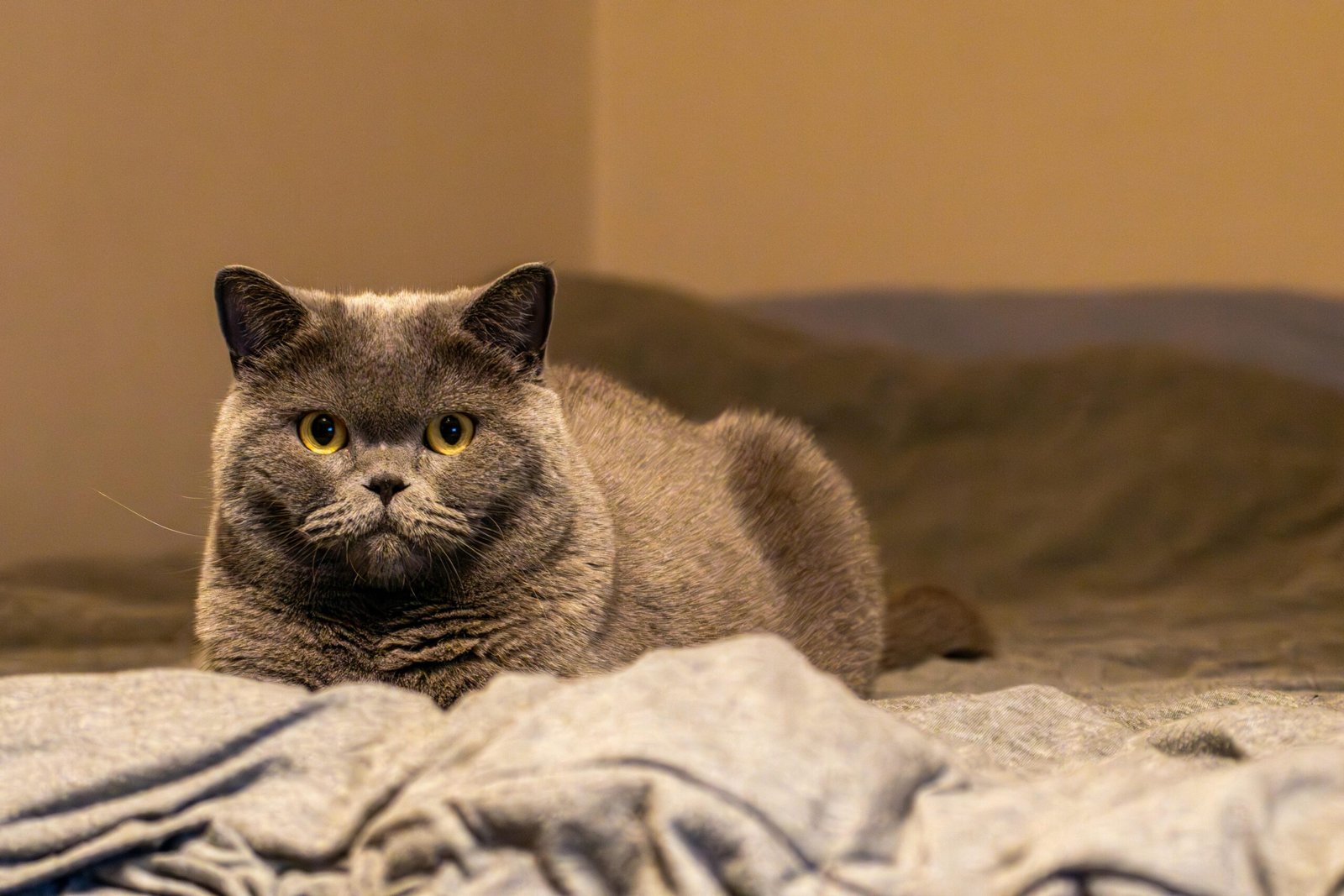Understanding Cat Behavior: Do They Know When They Misbehave? Last Updated on 22 Jan 2025, Care Kitties As cat owners we wonder …
Cat Pregnancy Signs: Vital Stages & Vet Insights
Is your cat pregnant? Cat pregnancy can be an extremely joyful time for you if you are a cat owner and have always wanted to see your cat’s kittens. Everyone who owns a cat loves it, and when the babies are born, everyone seems to just love it. When a cat is pregnant, it exhibits certain behaviors. We will talk about cat pregnancy in this article, including the symptoms of pregnancy and how to properly determine if your cat is pregnant.
Cat Pregnancy: When Do Cats Get Pregnant?
Female cats can get pregnant as early as 4-6 months of age. This stage is called the estrus, or “heat,” and cyclic occurs several times a year, more often during spring and summer and ending in the fall. The heat cycle is the time when a female cat (queen) is sexually receptive and can get pregnant when mated.
Phases of Cat Pregnancy:
Feline pregnancy lasts about 63–65 days, just over two months, and can be divided into three trimesters:Feline pregnancy lasts about 63–65 days, just over two months, and can be divided into three trimesters:
First Trimester (Weeks 1-3):
Fertilization and Implantation: The cat lays eggs, which are fertilized by the male-producing sperm; the embryos are then implanted in the uterus.
Early Development: Also, the formation of embryos and hormonal changes occur during this week.
Second Trimester (Weeks 4-6):
Growth and Development: The embryos rest for some time and then develop rapidly; you can see that physically your cat is changing.
Behavioral Changes: It becomes more loving towards you or simply avoid you and the other cat.
Third Trimester (Weeks 7-9):
Final Development: Pregnant females are fully developed and remain actively growing, stipulating birth preparations for kittens.
Nesting Behavior: The cat begins to choose comfortable and hidden places to lay her eggs.
Signs of cat pregnancy:
If the cat is pregnant, several behavioral and physical changes can be noticed:
Nipples Enlarge and Pink Up: In the third week of pregnancy, the cat’s breast tissue becomes more pronounced and the color changes to pink, a process commonly known as pinking up.
Increased Appetite: Female cats also get fat and eat more to feed the growing embryos in their wombs.
Weight Gain and Abdominal Enlargement: The tummy of the cat will also start swelling as the size of her eggs increases with the progress of the pregnancy.
Morning Sickness: While first-time cat mothers are usually symptomatic during the initial weeks of pregnancy, some of them can be sick with vomiting.
Increased Affection: There are some behavioral changes, and pregnant cats are usually very friendly and demand a lot of attention from their owners.
Nesting Behavior: When it is time to deliver, she will search for places that are well finished, private and comfortable for her to give birth.
Decreased Activity: During pregnancy, some cats even reduce the activities that they engage in as they need to save energy for the kittens.
Change in Sleeping Patterns: It also affects cats’ behavior, where they sleep more than usual or manifest other signs of tiredness.
Increased Thirst: Some pregnant cats take more liquid or liquids in their case.
Visible Movement in the Abdomen: During the later weeks of pregnancy, you will be able to observe the kittens within the cat’s abdomen or even notice some movement.
How Veterinarians Determine Pregnancy:
Even an experienced cat owner sometimes fails to properly identify if the cat is pregnant. I myself have seen the birth of 16 kittens, yet I failed to identify if one of my cats was pregnant. That is why, if you suspect your cat is pregnant, a veterinarian can confirm it through several methods:
Physical Examination:
Palpation: By the third week of pregnancy, a veterinarian can perform a palpation examination in which it is possible to estimate the size of the fetuses that are developing inside the cat’s body.
Ultrasound:
Early Detection: From as early as the second week of pregnancy, ultrasound can be used to confirm the pregnancy as well as the health and development of the kittens.
X-ray:
Bone Development: X-rays are ordinarily done after 42 days because the body of the kittens and their bones will be well developed and can be used for counting the kittens.
Hormone Tests:
Relaxin Test: Another method could entail a blood test to test for the hormone relaxin and has a likelihood of showing a pregnancy after a 25–30 day period.
We hope your cat’s pregnancy will bring a lot more joy and happiness to your house!!
Related Articles
Harness Training A Cat: An Eight-Step Guide Last Updated on 15 July 2024, Care Kitties Why harness training a cat is important …
Best Places to Bond With Your Cat Last Updated on 09 July 2024, Care Kitties It is necessary to take a perfect …
Top 11 Qualities that make you the Best Cat Parent Last Updated on 26 May 2024, Care Kitties Cats are adorable and …
Litter Training 101: Essentials for New and Experienced Cat Parents Last Updated on 20 May 2024, Care Kitties From birth, cats and …
Adopt, Don’t Shop: The Advantages of Pet Adoption Last Updated on 19 May 2024, Care Kitties We all want to have a …







